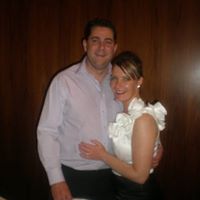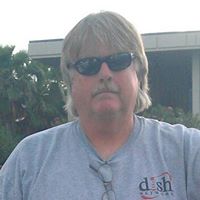Alan E Lyons
age ~78
from North Waterboro, ME
- Also known as:
-
- Allen E Lyons
- Phone and address:
-
213 Crescent Dr, North Waterboro, ME 04061
2072476764
Alan Lyons Phones & Addresses
- 213 Crescent Dr, North Waterboro, ME 04061 • 2072476764
- N Waterboro, ME
- 935 Franklin St, Whitman, MA 02382 • 7814470366
- 935 Franklin St, Whitman, MA 02382
Work
-
Position:Sales Occupations
Education
-
Degree:Bachelor's degree or higher
Emails
Specialities
Corporate • Litigation • Class Action Defense • Insurance & Reinsurance • Insurance Coverage Litigation • Reinsurance Disputes • Transactional/Regulatory
Us Patents
-
Reserve Cell-Array Nanostructured Battery
view source -
US Patent:7785733, Aug 31, 2010
-
Filed:Mar 18, 2004
-
Appl. No.:10/803565
-
Inventors:Marc Scott Hodes - Somerville MA, US
Paul Robert Kolodner - Hoboken NJ, US
Thomas Nikita Krupenkin - Middletown WI, US
Alan Michael Lyons - New Providence NJ, US
Mary Louise Mandich - Martinsville NJ, US
Joseph Ashley Taylor - Madison WI, US
Donald Weiss - Cresskill NJ, US -
Assignee:Alcatel-Lucent USA Inc. - Murray Hill NJ
-
International Classification:H01M 10/40
-
US Classification:429112, 429 62, 429118, 977948
-
Abstract:A battery having an electrode with at least one nanostructured surface is disclosed wherein the nanostructured surface is divided into cells and is disposed in a way such that an electrolyte fluid of the battery is prevented from contacting the portion of electrode associated with each cell. When a voltage is passed over the nanostructured surface associated with a particular cell, the electrolyte fluid is caused to penetrate the nanostructured surface of that cell and to contact the electrode, thus activating the portion of the battery associated with that cell. The current/voltage generated by the battery is controlled by selectively activating only a portion of the cells. Multiple cells can be active simultaneously to produce the desired voltage. The more cells that are active, the higher the current/voltage and the lower the overall life of the battery. The life of the battery can be extended by activating fewer cells simultaneously.
-
Reserve Cell-Array Nanostructured Battery
view source -
US Patent:7833653, Nov 16, 2010
-
Filed:Jun 11, 2010
-
Appl. No.:12/813792
-
Inventors:Marc Scott Hodes - Somerville MA, US
Paul Robert Kolodner - Hoboken NJ, US
Thomas Nikita Krupenkin - Middletown WI, US
Alan Michael Lyons - New Providence NJ, US
Mary Louise Mandich - Martinsville NJ, US
Joseph Ashley Taylor - Madison WI, US
Donald Weiss - Cresskill NJ, US -
Assignee:Alcatel-Lucent USA Inc. - Murray Hill NJ
-
International Classification:H01M 10/40
-
US Classification:429112, 429 62, 429118, 977948
-
Abstract:A battery having an electrode with at least one nanostructured surface is disclosed wherein the nanostructured surface is divided into cells and is disposed in a way such that an electrolyte fluid of the battery is prevented from contacting the portion of electrode associated with each cell. When a voltage is passed over the nanostructured surface associated with a particular cell, the electrolyte fluid is caused to penetrate the nanostructured surface of that cell and to contact the electrode, thus activating the portion of the battery associated with that cell. The current/voltage generated by the battery is controlled by selectively activating only a portion of the cells. Multiple cells can be active simultaneously to produce the desired voltage. The more cells that are active, the higher the current/voltage and the lower the overall life of the battery. The life of the battery can be extended by activating fewer cells simultaneously.
-
Salad Dryer
view source -
US Patent:20160166113, Jun 16, 2016
-
Filed:Dec 14, 2014
-
Appl. No.:14/569758
-
Inventors:ALAN LYONS - Plymouth MA, US
-
International Classification:A47J 43/04
-
Abstract:The THE SALAD DRYER uses a de-watering process which provides very dry and crisp salad greens in an automated appliance. The general process used in THE SALAD DRYER is evaporation due to wind/air being forced through a salad tumbling perforated drum.
Resumes

Alan Lyons
view sourceLocation:
United States

Alan Lyons
view sourceLocation:
United States
Lawyers & Attorneys

Alan Lyons - Lawyer
view sourceOffice:
Herrick, Feinstein LLP
Specialties:
Corporate
Litigation
Class Action Defense
Insurance & Reinsurance
Insurance Coverage Litigation
Reinsurance Disputes
Transactional/Regulatory
Litigation
Class Action Defense
Insurance & Reinsurance
Insurance Coverage Litigation
Reinsurance Disputes
Transactional/Regulatory
ISLN:
913232604
Admitted:
1998
University:
College of Law, York, England, 1994
Law School:
University of Northumbria at Newcastle, England, LL.B., 1993
Classmates

Alan Lyons
view sourceSchools:
St. Gregory the Great School San Antonio TX 1963-1971
Community:
Robert Klaus, Kathryn Seabrook

Alan Lyons
view sourceSchools:
New Westminster Secondary School New Westminster Saudi Arabia 1963-1967
Community:
Kirk Smith

Alan Lyons
view sourceSchools:
Bessborough Drive Public School Toronto Morocco 1985-1987
Community:
Gabe Nemeth, Edward Collins, Gordon Postill

St. Gregory the Great Sch...
view sourceGraduates:
Alan Lyons (1963-1971),
Christopher Saldana (1981-1989),
Kitty Frazier (1955-1958),
Sarah Crowley (1987-1990)
Christopher Saldana (1981-1989),
Kitty Frazier (1955-1958),
Sarah Crowley (1987-1990)

Carlyle High School, Carl...
view sourceGraduates:
Allen Lyons (1970-1974),
Robert Browning (1982-1991),
Lisa Ilges (1987-1991),
Mary Dubach (1984-1988),
Colin Hanke (1992-1996)
Robert Browning (1982-1991),
Lisa Ilges (1987-1991),
Mary Dubach (1984-1988),
Colin Hanke (1992-1996)
Youtube
Flickr
Plaxo

Alan Lyons
view sourceDublinDIT Digital Community Programme

Alan Lyons
view sourcehelius energy

Alan Lyons
view source
Alan Lyons
view source
Alan Lyons
view source
Alan Lyons
view source
Alan Lyons
view source
Alan Lyons
view source
Alan Lyons
view source
Alan Lyons
view sourceMyspace
Googleplus

Alan Lyons
Work:
Asterisky.com - Staff Writer
Education:
McDaniel College - Political Science and International Studies

Alan Lyons
Work:
CUNY - College of Staten Island - Professor

Alan Lyons

Alan Lyons

Alan Lyons

Alan Lyons

Alan Lyons

Alan Lyons
Get Report for Alan E Lyons from North Waterboro, ME, age ~78


![[Webinar] Emotional Intelligence and High Performa... [Webinar] Emotional Intelligence and High Performa...](https://i.ytimg.com/vi/w7Do7a2kDLE/hq720.jpg?sqp=-oaymwEcCNAFEJQDSFXyq4qpAw4IARUAAIhCGAFwAcABBg==&rs=AOn4CLClUMKQTkPjTqoqE64lBFoBnVcXNQ)


![[Webinar] Inside High Performing Teams | with Alan... [Webinar] Inside High Performing Teams | with Alan...](https://i.ytimg.com/vi/r5kXZFRE3mo/hqdefault.jpg?sqp=-oaymwEcCOADEI4CSFXyq4qpAw4IARUAAIhCGAFwAcABBg==&rs=AOn4CLBopKisPULCxlIWr6gKa-LWEZkirg)










